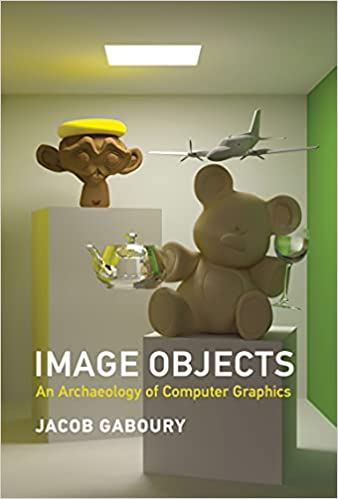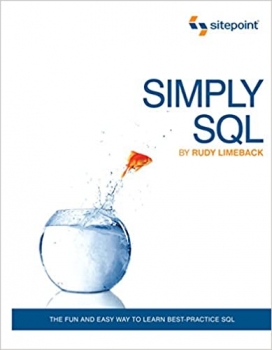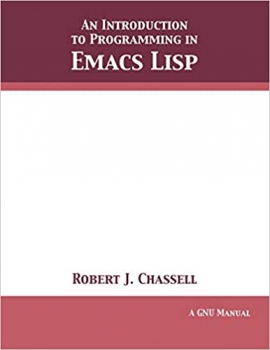این کتاب به صورت رنگی است.
Product details
- Publisher : The MIT Press (August 3, 2021)
- Language : English
- Hardcover : 312 pages
- ISBN-10 : 0262045036
- ISBN-13 : 978-0262045032
کتاب Image Objects: An Archaeology of Computer Graphics
How computer graphics transformed the computer from a calculating machine into an interactive medium, as seen through the histories of five technical objects.
Most of us think of computer graphics as a relatively recent invention, enabling the spectacular visual effects and lifelike simulations we see in current films, television shows, and digital games. In fact, computer graphics have been around as long as the modern computer itself, and played a fundamental role in the development of our contemporary culture of computing. In Image Objects, Jacob Gaboury offers a prehistory of computer graphics through an examination of five technical objects--an algorithm, an interface, an object standard, a programming paradigm, and a hardware platform--arguing that computer graphics transformed the computer from a calculating machine into an interactive medium.
Gaboury explores early efforts to produce an algorithmic solution for the calculation of object visibility; considers the history of the computer screen and the random-access memory that first made interactive images possible; examines the standardization of graphical objects through the Utah teapot, the most famous graphical model in the history of the field; reviews the graphical origins of the object-oriented programming paradigm; and, finally, considers the development of the graphics processing unit as the catalyst that enabled an explosion in graphical computing at the end of the twentieth century.
The development of computer graphics, Gaboury argues, signals a change not only in the way we make images but also in the way we mediate our world through the computer--and how we have come to reimagine that world as computational.
منابع کتاب کتاب Image Objects: An Archaeology of Computer Graphics
چگونه گرافیک کامپیوتری کامپیوتر را از یک ماشین محاسبه به یک رسانه تعاملی تبدیل کرد، همانطور که در تاریخچه پنج شیء فنی دیده می شود.
بسیاری از ما گرافیک کامپیوتری را یک اختراع نسبتاً جدید میدانیم که جلوههای بصری دیدنی و شبیهسازیهای واقعی را که در فیلمهای فعلی، نمایشهای تلویزیونی و بازیهای دیجیتال میبینیم را ممکن میسازد. در واقع، گرافیک کامپیوتری به اندازه خود کامپیوتر مدرن وجود داشته است و نقش اساسی در توسعه فرهنگ کامپیوتری معاصر ما داشته است. در Image Objectsژاکوب گابوری با بررسی پنج شیء فنی - یک الگوریتم، یک رابط، یک استاندارد شیء، یک الگوی برنامه نویسی و یک پلتفرم سخت افزاری - ماقبل تاریخ گرافیک کامپیوتری را ارائه می دهد و استدلال می کند که گرافیک کامپیوتری کامپیوتر را از یک ماشین محاسبه به تبدیل کرده است. یک رسانه تعاملی
گابوری تلاش های اولیه برای تولید یک راه حل الگوریتمی برای محاسبه دید شی را بررسی می کند. تاریخچه صفحه نمایش کامپیوتر و حافظه دسترسی تصادفی را که برای اولین بار تصاویر تعاملی را ممکن کرد، در نظر می گیرد. استانداردسازی اشیاء گرافیکی را از طریق قوری یوتا، معروفترین مدل گرافیکی در تاریخ این رشته، بررسی میکند. ریشه های گرافیکی پارادایم برنامه نویسی شی گرا را بررسی می کند. و در نهایت، توسعه واحد پردازش گرافیک را به عنوان کاتالیزوری در نظر می گیرد که انفجاری را در محاسبات گرافیکی در پایان قرن بیستم ممکن کرد.
گابوری استدلال میکند که توسعه گرافیک رایانهای نشاندهنده تغییری است نه تنها در نحوه ساخت تصاویر، بلکه در روشی که جهان خود را از طریق رایانه واسطهای میکنیم - و اینکه چگونه دوباره آن جهان را محاسباتی تصور میکنیم.






























ارسال نظر درباره کتاب Image Objects: An Archaeology of Computer Graphics